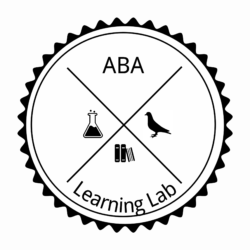Brian Kaminski, RBT, Graduate Student of Behavior Analysis
When it comes to ABA programming, Discrete Trial Training (DTT) is a heavily relied upon form of instruction.
When done effectively, DTT provides a mode for rapid skill development because instructions are clear, consequences are immediate, and the learner (should be) highly motivated.
However, when not implemented with fidelity, the aspects of DTT which make it effective (namely, repetition of trials) can in fact be a hindrance to learning. In other words, if something is ran incorrectly, it is ran incorrectly a lot of times.
Let’s look at one aspect of DTT, which when implemented inaccurately, can lead to less than favorable outcomes.
Providing Instructions / Stating the SD
When new behavior technicians are first introduced to ABA, they are often taught (correctly) that instructions should be clear and concise, especially for early learners.
The reasoning is simple: We want our kiddos to attend to the most relevant part of an instruction. Like everything in ABA, we start simple and expand once skills develop.
Example) “Sit down”
Non-example) “When you’re done playing Transformers, I want you to come over here to the table and sit up nice and straight with ready hands so we can start doing our math facts.”
See the difference?
However, I think that new therapists, in their efforts to be clear and concise, often break instructions down into unnatural parts.
Instructions become monotone and almost robotic – the exact opposite form of language we are trying to foster in our clients.
As with all learning, language development is a byproduct of imitation. Work with one client long enough, and before you know it, they pick up on mannerisms and expressions you didn’t even know you had!
Last point – I think that well intentioned therapists provide monotone instructions because at some point they were told that verbal praise (“Good job, Timmy!”) should be delivered with more emphasis and enthusiasm.
Also correct.
However, instructions can still be given with emphasis and enthusiasm, so long as verbal praise is delivered with EVEN MORE emphasis and enthusiasm!
Summary:
- Instructions should be clear, concise, and direct (especially for early learners)
- Instructions can be delivered with inflection and emphasis
- When providing praise, provide even MORE inflection and emphasis!
- Instructions do not have to be monotone, robotic, or delivered in an unpleasant tone (ask yourself the question “As my client’s language develops, how do I want it to sound?”)


Great post! This tendency toward truncated speech is quite common, and I often find myself questioning the reason. While we want to ensure that our learners are responding to the critical verbal stimuli, and it may be necessary to remove certain words if they are interfering with such, all learner’s should be spoken to naturally, like human beings. If we want to overcome the prevailing notion that our learners respond robotically, we need to stop speaking to them like robots. I am also very glad that you touched on the importance of how we say what we say. While it is important that your verbal SD’s and instructions are specific and clearly audible, they should signal the availability of “good things” (by their very definition). Shouting, barking or use of a “teacher voice” is not only ineffective but inappropriate. As you said, we must, at all times, consider how we would want to be spoken to.